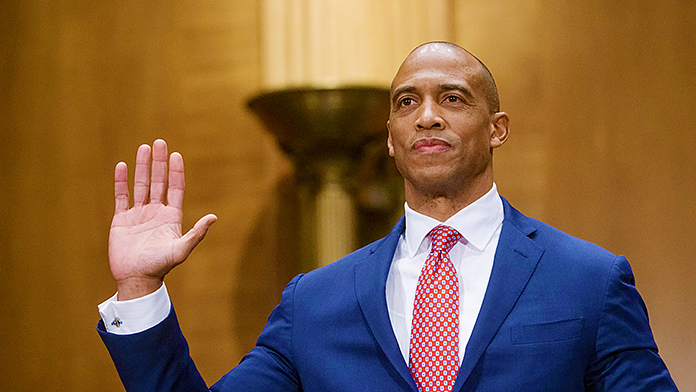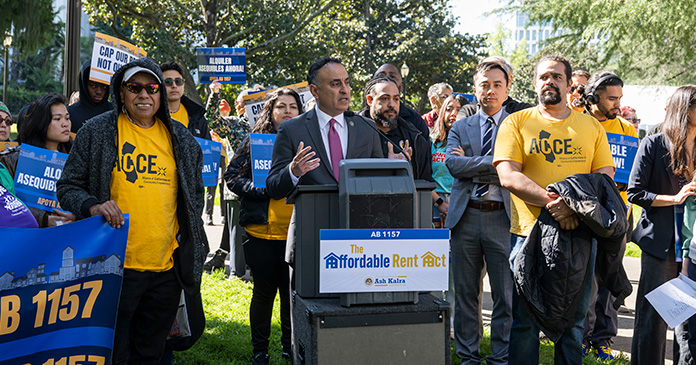Prudent employers have trained managers and employees on preventing unlawful discrimination and harassment in the workplace for years. Such training helps employers avoid conflicts that result in litigation and can also help defend against lawsuits if they arise. This course of action has become a legal responsibility since Gov. Schwarzenegger signed Assembly Bill 1825 September 29, 2004.
AB 1825 requires that employers train supervisors on sexual harassment every two years. At first glance, the statute only seems to codify what many employers are already doing. A close reading of the statute reveals specific requirements that every employer must now follow.
THE THEORY BEHIND AB 1825
AB 1825 was sponsored by Assemblywoman Sarah Reyes. Her basic argument was that current laws, while prohibiting sexual harassment, have not done enough to eliminate the problem. Reyes notes that during the 2002-03 fiscal year, 4,231 sexual harassment cases were filed with the Department of Fair Employment and Housing (DFEH), totaling 22 percent of all cases filed. The impact of sexual harassment on businesses is significant, Reyes argued. Harassment costs the average Fortune 500 Company $6.7 million per year in indirect costs alone.
Training helps reduce those costs.
AB 1825 applies only to entities that regularly employ 50 or more employees or regularly receive the services of 50 or more persons pursuant to a contract. Presumably the “receiving services” language is an attempt to avoid deciding if a worker is an employee or independent contractor.
The law imposes an initial and continual training requirement on covered employers. By January 1, 2006, employers must provide two hours of sexual harassment training and education to all supervisory employees employed as of July 1, 2005. Employers that already provided such training to a supervisory employee in or after 2003 would be exempt from this initial requirement. After January 1, 2006, covered employers must provide sexual harassment training and education to each supervisory employee once every two years and to each new supervisory employee within six months of their assuming a supervisory position.
While AB 1825 does not define “supervisor,” presumably, the definition contained in the Fair Employment and Housing Act (FEHA) will apply. A “supervisor” is any individual having the authority “to hire, transfer, suspend, lay off, recall, promote, discharge, assign, reward, or discipline other employees, or the responsibility to direct them, or to adjust their grievances, or effectively to recommend that action, if the exercise of that authority is not of a merely routine or clerical nature, but requires the use of independent judgment.”
SPECIFICS OF THE TRAINING REQUIREMENT
AB 1825 also sets specific quality standards for the required training. The training must be conducted via “classroom or other effective interactive training” and include:
- Information and practical guidance regarding the federal and state statutory provisions concerning the prohibition against and the prevention of sexual harassment.
- Information about the correction of sexual harassment and the remedies available to victims of sexual harassment in employment.
- Practical examples aimed at instructing supervisors in the prevention of harassment, discrimination, and retaliation.
The quality mandate extends to those presenting the training. The training can only be presented by “trainers or educators with knowledge and expertise — in preventing harassment, discrimination, and retaliation.
The quality standards require an employer to closely examine its training programs. Merely sitting a supervisor down and having her or him view a video or non-interactive web-based product — “show and go” — would likely not meet the statutory requirements. The most prudent approach is to use trainers and training organizations with both a solid training and harassment prevention background regardless of whether the training is done live or online.
The statute provides a floor, not a ceiling, for an employer’s harassment prevention efforts. The FEHA makes it an unlawful practice for an employer to fail to take “all reasonable steps” necessary to prevent harassment from occurring. Providing the required training is only one step in meeting this requirement. Indeed, AB 1825 does not “discourage or relieve any employer from providing for longer, more frequent, or more elaborate training and education regarding workplace harassment or other forms of unlawful discrimination to meet its obligations to take all reasonable steps necessary to prevent and correct harassment and discrimination.”
The statute’s invitation to go beyond its minimum requirements should be accepted by employers. In particular, employers should provide extra training (additional classes or training longer than two hours) that covers all the protected categories under both federal and state anti-discrimination laws. The Equal Employment Opportunity Commission’s (EEOC) 1999 guidance on preventing liability for workplace harassment states:
“An employer should ensure that its supervisors and managers understand their responsibilities under the organization’s anti-harassment policy and complaint procedure. Periodic training of those individuals can help achieve that result. Such training should explain the types of conduct that violate the employer’s anti-harassment policy; the seriousness of the policy; the responsibilities of supervisors and managers when they learn of alleged harassment; and the prohibition against retaliation.”
Training limited exclusively to sexual harassment will be of little or no value in defense of a race, national origin, color, age, or disability harassment case. Such limited training could backfire. For example, a plaintiff could argue that the employer was such a “minimalist” that only the statutory sexual harassment training was done. This minimalist approach, a plaintiff could then argue, shows a lack of respect or importance being placed on racial harassment.
The good news for employers is that, under AB 1825, a claim that training failed to reach a particular individual does not automatically result in the employer’s liability for subsequent harassment. Plaintiffs and their attorneys will likely argue that the failure to meet the new training mandates is partial evidence of an employer’s failure to take all reasonable steps to prevent harassment. The bad news is that an employer’s compliance with the statute does not automatically insulate them from liability for sexual harassment. If an employer violates any of the statute’s mandates, the DFEH must issue an order requiring compliance.
STEPS FOR EMPLOYERS
There are several steps employers can take to ensure compliance with the new law:
1. Audit the organization’s 2004 harassment training efforts. Remember that supervisors trained in 2003 and 2004 with programs that meet AB 1825’s requirements will not have to be re-trained in 2005. It is likely that many employers will only have to focus on training newly hired or promoted supervisors.
2. Decide who will do the training. Regardless of whether the training is conducted with internal or external resources, live or online (or a combination thereof), employers must remember the quality standards mandated by the statute.
3. Establish the training program — topics and timing. The law requires a minimum two hours of sexual harassment training covering specific topics. By lengthening the training program slightly (a half-hour, for example), employers should be able to cover harassment prevention based on the other categories protected under federal and state law (such as race, age, and disability). Covering these extra topics will help limit workplace disputes and create a stronger defense against liability or damages if litigation arises.
4. Decide who needs to be trained. The statute requires training all supervisors. Thus, employers need to list all of those who meet the FEHA’s definition of a supervisory employee. The harder task may be keeping track of those who are newly promoted to supervisor or whose responsibilities change to include supervisory duties.
5. Draw up a training schedule. Even mid-size companies will likely be challenged to ensure that all supervisors receive training by January 1, 2006 and every two years thereafter. Employers must also retain records that the supervisors took the course. Learning management systems or data tracking systems that come with some high quality e-learning products can help with this process.
6. Keep track of which supervisors have taken and completed the training by creating and maintaining physical records, such as sign-in sheets. An employer that diligently trains all its supervisors with appropriate content in a timely manner, but cannot produce the physical evidence confirming it has done so, faces the possibility that it will be disbelieved by a jury, court, or administrative fact-finder, and thus reap none of the benefits of its diligence.
Author: David N. Goldman, ESQ and Christoper E. Cobey, ESQ
















